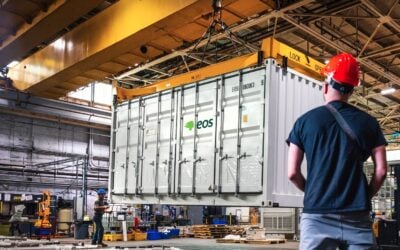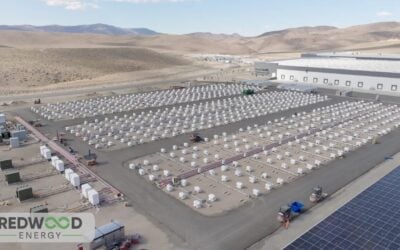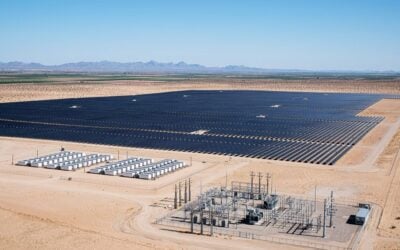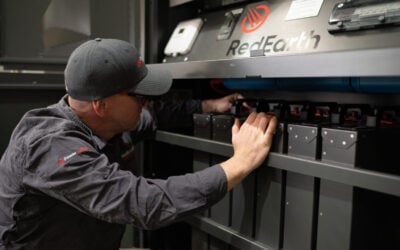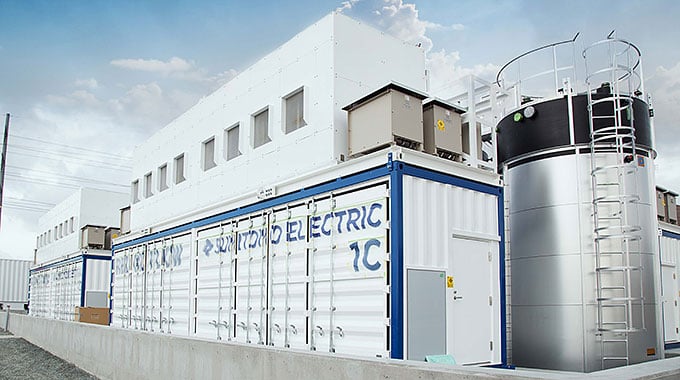
The drive towards longer duration energy storage will likely be multifaceted, with different technologies finding their place both in front of and behind the meter.
One particular consideration is likely to be energy density per square kilometer, suggested Jin Noh, policy director for the California Energy Storage Alliance during a panel discussion, chaired by Stephen Prince, senior advisor at Alexa Capital, at the virtual Energy Storage Summit USA 2021 event hosted by our publisher Solar Media.
Enjoy 12 months of exclusive analysis
- Regular insight and analysis of the industry’s biggest developments
- In-depth interviews with the industry’s leading figures
- Annual digital subscription to the PV Tech Power journal
- Discounts on Solar Media’s portfolio of events, in-person and virtual
“One thing that’s maybe not productised, or were valued as a grid product, is energy density per square kilometer of land,” said Noh. “Especially when we think about these resiliency applications, where we’re not able to over build solar or storage to provide that resiliency. Or in local capacity constrained areas like the LA basin, where land is not only expensive, but when you think about how we want to utilise precious limited land and we have to have more energy in the tank, I think that kind of value is probably going to show up on the procurement side.
“But I think that’s the value that people might overlook. Just at a high level, or in grid planning models.”
The range in long-duration storage – which the panel agreed was currently anything above six hours – means than not only is it likely to aid areas with land constraints, but also in areas where the land itself is at risk.
Erik Stokes, chief of the Energy Deployment Office at the California Energy Commission pointed to opportunity for some emerging tech such as zinc batteries behind the meter in regions like California that are increasingly experiencing wildfires and public safety power shutoff (PSPS) events.
With these events came an increased focus on microgrids and storage in general, with resiliency an increasingly concern for many.
“Customers, especially those that really can’t afford to have power go out for these 10/12/14 hours, they need better longer duration storage solutions, than probably what lithium ion can provide,” said Stokes.
He continued to highlight regulatory changes made by the California Public Utilities Commission this year, to ensure telecoms companies have 72 hours of backup power during outages. During last years’ wildfires many telecoms towers went down during the PSPS’s, limiting communication between those in the effected areas.
Longer duration storage could step up, to help cover than 72 hours as opposed to heavily polluting diesel generators, offering an important revenue stream for emerging long-duration technologies.
The panelists, which also included Monica Padilla, director of Power Resources at Silicon Valley Clean Energy, Julia Prochnik, executive director at the Long Duration Energy Storage Association of California and Jaime Vega Marcos, managing director at E22 Energy Storage Solutions, were asked which top three long-duration storage will likely lead the race to commercial viability over coming years.
But the vast range of technologies encompassed within the long-duration sector – from long established systems like pumped hydro, to flywheels, gravity, thermal storage and green hydrogen – made it difficult to choose any singular winner, because they will not solve a singular problem. The technologies that can aid during PSPS are unlikely to be those that aid seasonal demand for example.
“I think long-duration can be both local and system wide,” added Prochnik. “[You can have] the diversity of pumped hydro in the north and zinc batteries, which have been and are starting to be more backup for telecoms, which is pretty fascinating. And the different types of liquid air or other types of green hydrogen that can help frontline and disadvantaged communities as fossil fuel plants are being replaced.
“I mean, it’s really amazing the types of plug and play that can go throughout the state and throughout the region.”
Support will still be needed to get many of the technologies over the line however, with a long term view that takes into account not just the value proposition now, but the needs of the system decades down the line, the panel agreed. This echoes the Department of Energy’s director of energy storage research Dr Imre Gyuk comments at a previous session at the summit, who said the business case for a range of long-duration storage technologies needs to be addressed to help the US reach its decarbonisation targets.
There are still areas within funding where the dots need to be connected to support long-duration storage, with Padilla highlighting that in a policy driven state like California, and long term state planning must play a role.
The Energy Storage Summit USA 2021 concludes with two days of online sessions on 30 and 31 March and all previous sessions can be viewed on-demand. See the website for details.


